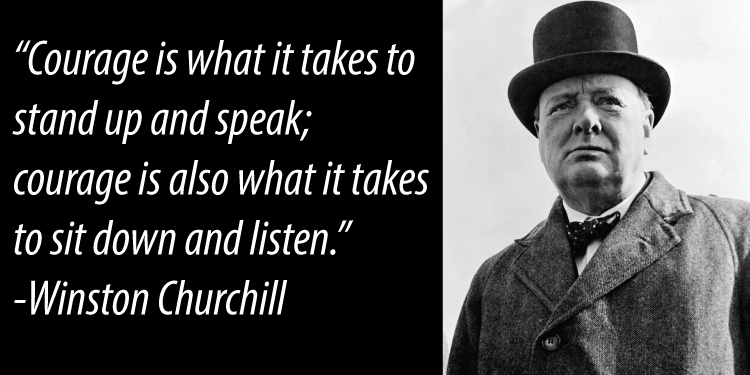You know the feeling.
You see a customer heading your way to complain.
Or maybe they’ve already submitted feedback and checked the “please follow up” box on the form. Or maybe your employees have warned you about the person who has complained to them already and is bringing her concerns up the chain.
In any case, you think you have the right customer service listening skills to truly hear her out. So you square your shoulders, practice your best “I’m truly concerned” face and prepare yourself to stay calm while hearing a rant.
And you are already doing it all wrong.
Listening to customers – or employees for that matter – can be challenging. They often don’t know the reason things have to work the way they do. They often complain about things you can’t change. They sometimes have already decided to just tell you a long, drawn-out story about why they will never deal with your organization again!

Listening is truly an art. Doing it well means understanding why you’re doing it and what the outcomes need to be.
1. Listen to empathize.
Yes, this seems obvious. But it’s often overlooked.
Empathy means really putting yourself into the speaker’s shoes and doing your best to truly understand his or her perspective. This is challenging because you live the experience from the other side.
As a customer complains about the way she has been overbilled, you might slip into “that’s because you filled out the billing form wrong” in your head. Catch yourself blaming the speaker, and correct how you are hearing him. Don’t try to solve the problem or place fault on why it happened.
Listen. Understand. Empathize.
This allows you to sincerely say “I’m sure that was frustrating” or “I’m really sorry you had to spend your time dealing with this” in an honest way that connects.
2. Listen to understand.
If you avoid blaming the complainer, it’s easier to listen for what really went wrong. Maybe she did fill out a form incorrectly. What does that tell you about the form? If it’s online, why aren’t there tips and error messages which clearly outline how to do it correctly? What if it happened because of some process on the backend? It’s time to take notes and truly determine what went wrong.
Before you say “Nothing went wrong! This is how it works!” go back to #1 and try again. It went wrong for the customer. So it went wrong.
3. Listen to take action.
Once you identify an area that requires further attention, it’s time to outline a plan on how to fix it.
Take a minute after a customer conversation to really think about what to do next. Is it a quick fix? Who’s in charge of taking what action? If it’s a larger issue, is there a place to gather that type of feedback for further review? Don’t let the complaint dissolve into the ether. It’s one complainer representing many customers. They want you to do something to make it better.
Customer service listening is a challenge.
It’s even more of a challenge in today’s hyper-distracting world of too many channels and many vocal complainers. Next time you are facing that inevitable situation, take a breath and get ready to listen with the right intentions.
Your complainers, future customers, and blood pressure will all thank you!
Image credit: Wikimedia Commons



